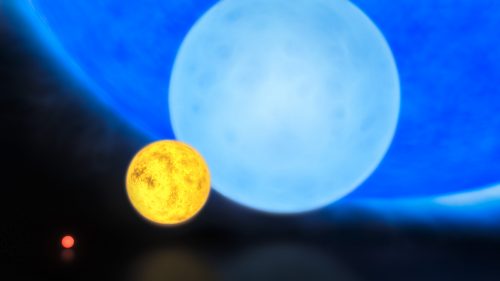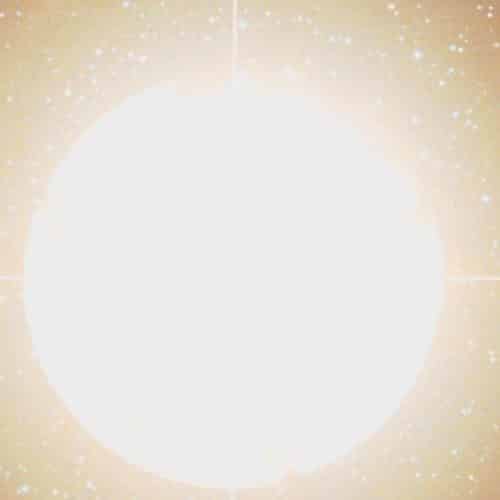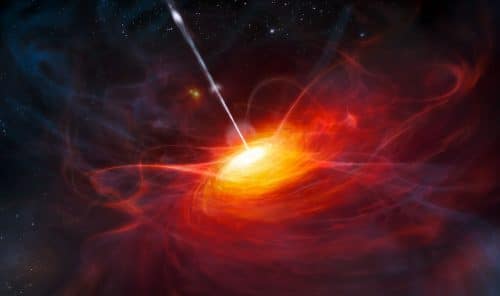The Israeli summer has not yet reached its peak and many of us are already wishing for some respite. The first hamsin has already hit, the dazzling daylight hours are getting longer and even the evenings and mornings cease to be a respite from the heat. So let's get some proportions and talk about the hottest place and the brightest and brightest thing in the entire universe.
By: Bar Hayon, editor Israel Space Agency website, Ministry of Science and Technology

When the sunlight outside is particularly intense we say that the sun is blinding. Astronomers prefer to talk about brightness, that is, "the visible light intensity of a body". The more light an object emits, the brighter it is, but what deceives the eye is of course the distance. The sun appears to us as the brightest body (in fact it is difficult to imagine a greater degree of brightness) but that is only because it is relatively close. Therefore, in order to compare the brightness of different bodies, astronomers use a unit of measurement called absolute brightness, that is, the brightness of a body when it is assumed to be at a certain and fixed distance from Earth.
By this measure, our dazzling sun is already less impressive than it seems. One of the brightest stars in the galaxy, for example, a star with the terrestrial name LBV 1806-20, shines more than 2 million times brighter than the Sun. The difference between the brightness of a candle and that of a stadium spotlight does not even come close to the difference between the brightness of the sun and that of the LBV 1806-20. But even its brightness is faint compared to the star currently considered the brightest in the universe: R136a1 which shines 8.7 million times brighter than the Sun.
size does not matter
It is interesting to know that when it comes to clarity, size does not matter. The largest star in the universe discovered so far is UY in Shield. Its radius is 1700 times greater than that of the Sun and its volume is 5 billion times greater. What it means? Take a look at the following picture of UY in the shield:

If we wanted to show you a picture of our sun next to this picture but keep the ratio right, it wouldn't even cover a single pixel on the computer screen. If the earth were the size of a sea globe, relative to it our sun would be the size of a seven-story building and UY in shield- bigger than four Mount Everest combined! The star R136a1 is also relatively small compared to this monster, but since it is compressed into a larger mass it is also much brighter.
But what would happen if we entered the brightness competition not only stars. What, then, is the brightest thing in the universe, compared to which even the brightest star is not even a faint flashlight that has run out of batteries?
The brightest in the universe
The first candidate that comes to mind for the title of "brightest thing in the universe" would be a supernova - a massive burst of gamma rays that occurs when a large star ends its life. Such a burst releases energy equal to that which our sun will release during its entire existence, about ten billion years. But it is still not the greatest brightness in the universe; That title belongs to Quasar.

A quasar is a phenomenon caused by black holes. A black hole is a huge mass of matter that has collapsed in on itself. But in the case of quasars, these are extremely massive black holes located in the centers of galaxies. Before the matter and gases around the black hole are swallowed up inside it, they revolve around it at tremendous speed and the collisions between themselves cause them to emit the most enormous energy we know (seeA simulation of what it looks like, from a distance). The mass of a black hole at the center of a quasar is enormous and can even be equal to that of 40 billion suns like our sun (imaging). The brightness of the quasar 3C 273 (Image) is 4 trillion times larger (which is a thousand times a billion) than that of the Sun. If it were 30 light-years away, seven times the distance to Proxima Centauri, the closest star to Earth, it would shine as brightly as our Sun.
So ironically you could say that the brightest thing in the universe, a quasar, was caused by the darkest thing in the universe, a black hole.
As hot as possible
So quasars are the brightest object in the universe but what is the hottest? We know that there is a bottom to cold: it is not possible to have a temperature lower than absolute zero, minus 273.15 degrees Celsius. But how high can you climb?
Let's start small, here on Earth. Volcanoes, for example, where the hot lava reaches a temperature of more than a thousand degrees and in the earth's core the temperature reaches about 5,700 degrees, roughly the same as on the surface of the sun. The core of the sun itself already reaches about 15 million degrees, but even this is still far from being the hottest place in the universe. in the year 2009 A gas cloud has been discovered that is five billion light years away from us where the temperature is estimated at 300 million degrees. In the supernova, which we mentioned, the heat can even reach a trillion degrees.
But what does a trillion degree heat even mean?
Try to think about water that we heat in a kettle. As the temperature rises, the water molecules, which are composed of oxygen and hydrogen atoms, separate from each other until air bubbles form and the water evaporates. At higher temperatures, as in our sun, even the atoms themselves do not remain indifferent and separate from the electrons surrounding them. At a trillion degrees something even stranger happens: the nuclei of the atoms themselves disintegrate and the protons and neutrons that make them up simply "melt". At such a high temperature, the materials as we know them completely cease to be what they are.
But the highest temperature measured is surprisingly closer than we'd expect (hold on tight): here, on Earth. As part of an experiment in a particle accelerator at the Brookhaven National Laboratory, New York, United States, scientists managed to create a temperature of 4 trillion degrees. It was of course for a very short time, less than a billionth of a second and only over a number of atoms.
Theoretically, there is only one more time and place left where a higher temperature can be hypothesized. For this we must go back about 13.8 billion years to the Big Bang, the moment when the universe we know was created. According to some theories, in the moments immediately after the big bang the temperature reached about 141 nonillion degrees Celsius. The number nonillion is the one with thirty zeros after it, or one thousand times a billion times a billion times a billion. And that really cannot be compared to anything, not even to the Israeli Hamsin.
How did our sun form, can we ever reach it, and could it explode? Read more articles about the sun on the Israel Space Agency website.

3 תגובות
Shouldn't the temperature have an upper limit (theoretical) which is when the particles reach the speed of light?
Of course you can't reach it, but you certainly can't pass it.
The blinding effect of the second photo in the article is quite amazing, even a white page is not so blinding.
You forgot the event that releases the most energy in the universe: the union of two black holes into one.